Services Offered
OUT PATIENT
We offer Pediatrics, Opthalmology, Family Medicine, Internal Medicine, Dental Orthodontics, Occupational Medicine, Obstetrics and Gynecology, And ENT, Head & Neck Surgey.
 Pediatrics is the branch of medicine that involves the medical care of infants, children, and adolescents.
Pediatrics is the branch of medicine that involves the medical care of infants, children, and adolescents.
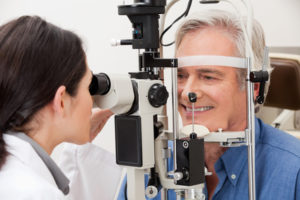 Ophthalmology is a branch of medicine and surgery that deals with the anatomy, physiology and diseases of the eyeball and orbit.
Ophthalmology is a branch of medicine and surgery that deals with the anatomy, physiology and diseases of the eyeball and orbit.
 Family medicine, formerly family practice, is a medical specialty devoted to comprehensive health care for people of all ages; the specialist is named a family physician or family doctor.
Family medicine, formerly family practice, is a medical specialty devoted to comprehensive health care for people of all ages; the specialist is named a family physician or family doctor.
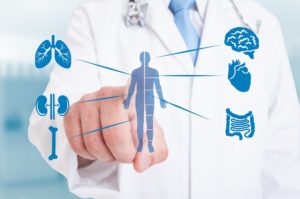 Internal medicine or general medicine is the medical specialty dealing with the prevention, diagnosis, and treatment of adult diseases.
Internal medicine or general medicine is the medical specialty dealing with the prevention, diagnosis, and treatment of adult diseases.
 Orthodontia, also called orthodontics, is a specialty of dentistry that deals with the diagnosis, prevention and correction of malpositioned teeth and jaws.
Orthodontia, also called orthodontics, is a specialty of dentistry that deals with the diagnosis, prevention and correction of malpositioned teeth and jaws.
 Occupational medicine, until 1960 called industrial medicine, is the branch of medicine which is concerned with the maintenance of health in the workplace, including prevention and treatment of diseases and injuries, with secondary objectives of maintaining and increasing productivity and social adjustment in the workplace.
Occupational medicine, until 1960 called industrial medicine, is the branch of medicine which is concerned with the maintenance of health in the workplace, including prevention and treatment of diseases and injuries, with secondary objectives of maintaining and increasing productivity and social adjustment in the workplace.
 Obstetrics and gynecology is the medical specialty that encompasses the two sub specialties of obstetrics (covering pregnancy, childbirth, and the postpartum period) and gynecology (covering the health of the female reproductive systems – vagina, uterus, and ovaries).
Obstetrics and gynecology is the medical specialty that encompasses the two sub specialties of obstetrics (covering pregnancy, childbirth, and the postpartum period) and gynecology (covering the health of the female reproductive systems – vagina, uterus, and ovaries).
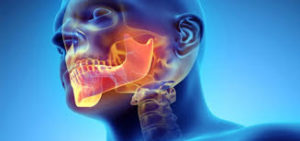 Head and necks surgeons are often called ear, nose and throat doctors or otolaryngologists. Otolaryngology is a surgical specialty. It covers the diagnosis and treatment of many common disorders affecting the head and neck.
Head and necks surgeons are often called ear, nose and throat doctors or otolaryngologists. Otolaryngology is a surgical specialty. It covers the diagnosis and treatment of many common disorders affecting the head and neck.
Services Offered
LABORATORY
We offer Hematology, Drug Testing, Microbiology, Histopathology, Clinical Microscopy and Serology-Immunology.
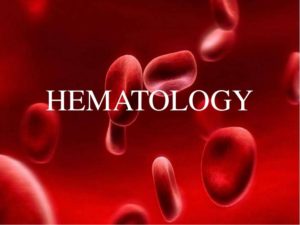 Hematology, also spelled haematology, is the branch of medicine concerned with the study of the cause, prognosis, treatment, and prevention of diseases related to blood.
Hematology, also spelled haematology, is the branch of medicine concerned with the study of the cause, prognosis, treatment, and prevention of diseases related to blood.
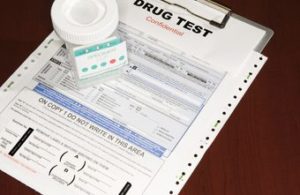 A drug test is a technical analysis of a biological specimen, for example urine, hair, blood, breath, sweat, and/or oral fluid/saliva — to determine the presence or absence of specified parent drugs or their metabolites.
A drug test is a technical analysis of a biological specimen, for example urine, hair, blood, breath, sweat, and/or oral fluid/saliva — to determine the presence or absence of specified parent drugs or their metabolites.
 Microbiology is the study of microscopic organisms, such as bacteria, viruses, archaea, fungi and protozoa.
Microbiology is the study of microscopic organisms, such as bacteria, viruses, archaea, fungi and protozoa.
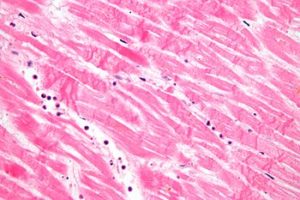 Histopathology refers to the microscopic examination of tissue in order to study the manifestations of disease.
Histopathology refers to the microscopic examination of tissue in order to study the manifestations of disease.
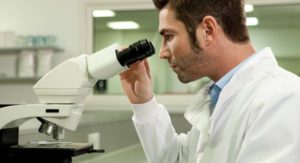 Clinical Microscopy is an analysis and examination that involves non-blood procedures.
Clinical Microscopy is an analysis and examination that involves non-blood procedures.
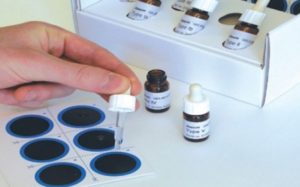 Serology is the study of blood serum (the clear fluid that separates when bloodclots). Immunologyad serology laboratories focus on the following: Identifying antibodies. These are proteins made by a type of white blood cell in response to a foreign substance (antigen) in the body.
Serology is the study of blood serum (the clear fluid that separates when bloodclots). Immunologyad serology laboratories focus on the following: Identifying antibodies. These are proteins made by a type of white blood cell in response to a foreign substance (antigen) in the body.
Services Offered
MEDICAL & DIAGNOSTIC
We offer ECG, 2D Echo, Stress Test, Ultrasound, Digital X-ray, Pulmonary Function Test, 24 Hour Holter ECG Monitoring and 24 Hour ABP Monitoring.
Audiometry is a test of function of the hearing Mechanism. This includes test of Mechanical sound Transmission (middle ear) neural sound transmission (cochlear function). A complete evaluation of a patient’s hearing must be done by Audiologist using instrument design specifically for this purpose. Pure tones (single Frequencies) are used to test air and bone conduction these and speech testing are done with an audiometer. The Audiometer is an electric instrument consisting of a pure tone generator a bone conduction oscillator for measuring cochlear function, an attenuator for varying loudness, and earphones for air conduction testing. Pure tone audiometric air conduction testing is performed by presenting a pure tone to the ear through an earphone and measuring the lowest intensity in decibels (dB) at which this tone is perceived 50% of the time. The measurement called Threshold. The testing procedure is repeated at specific frequencies from 500 to 6000 hertz/cycle per second for each ear, and the threshold are recorded on a graph called audiogram. Bone Conduction testing is done by placing an oscillator on the mastoid process and measuring threshold at the same frequencies. Masking Noise is sometimes used in the non-test ear to prevent its participation in the test.
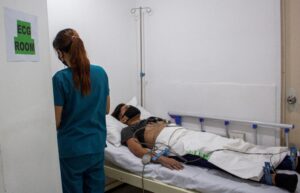 Electrocardiography is the process of recording the electrical activity of the heart over a period of time using electrodes placed over the skin.
Electrocardiography is the process of recording the electrical activity of the heart over a period of time using electrodes placed over the skin.
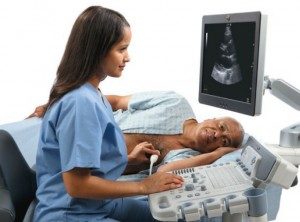 An echocardiogram (echo) is a test that uses high frequency sound waves (ultrasound) to make pictures of your heart.
An echocardiogram (echo) is a test that uses high frequency sound waves (ultrasound) to make pictures of your heart.
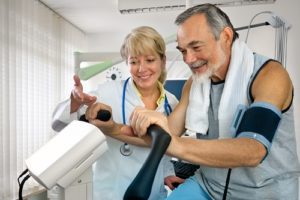 A cardiac stress test is a cardiological test that measures the heart’s ability to respond to external stress in a controlled clinical environment.
A cardiac stress test is a cardiological test that measures the heart’s ability to respond to external stress in a controlled clinical environment.
Ultrasound is sound waves with frequencies higher than the upper audible limit of human hearing.
 The chest x–ray is the most commonly performed diagnostic x–ray examination. A chest x–ray produces images of the heart, lungs, airways, blood vessels and the bones of the spine and chest. An x–ray(radiograph) is a noninvasive medical test that helps physicians diagnose and treat medical conditions.
The chest x–ray is the most commonly performed diagnostic x–ray examination. A chest x–ray produces images of the heart, lungs, airways, blood vessels and the bones of the spine and chest. An x–ray(radiograph) is a noninvasive medical test that helps physicians diagnose and treat medical conditions.
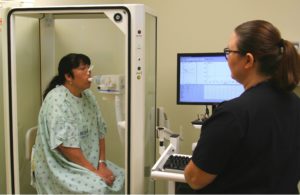 Pulmonary function test is a complete evaluation of the respiratory system including patient history, physical examinations, and tests of pulmonary function.
Pulmonary function test is a complete evaluation of the respiratory system including patient history, physical examinations, and tests of pulmonary function.
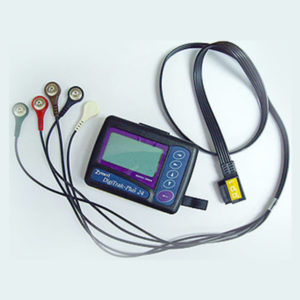 Holter monitor is a type of ambulatory electrocardiography device, a portable device for cardiac monitoring for at least 24 to 48 hours. The Holter’s most common use is for monitoring ECG heart activity.
Holter monitor is a type of ambulatory electrocardiography device, a portable device for cardiac monitoring for at least 24 to 48 hours. The Holter’s most common use is for monitoring ECG heart activity.
 Ambulatory blood pressure monitoring measures blood pressure at regular intervals. It is believed to be able to reduce the white coat hypertension effect in which a patient’s blood pressure is elevated during the examination process due to nervousness and anxiety caused by being in a clinical setting.
Ambulatory blood pressure monitoring measures blood pressure at regular intervals. It is believed to be able to reduce the white coat hypertension effect in which a patient’s blood pressure is elevated during the examination process due to nervousness and anxiety caused by being in a clinical setting.


